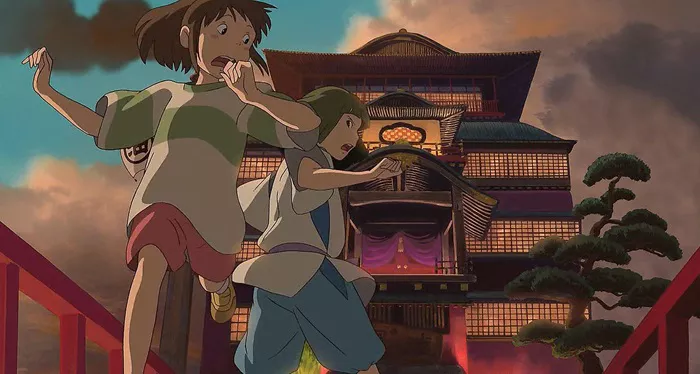Spirited Away,” directed by Hayao Miyazaki and produced by Studio Ghibli, is celebrated globally for its rich narrative depth, imaginative world-building, and profound symbolism. One of the most poignant moments in the film occurs when Chihiro, the young protagonist, is instructed not to look back as she leaves the spirit world. This directive, simple yet laden with meaning, encapsulates a wide array of themes and messages Miyazaki conveys throughout the film. This article delves into the reasons and the broader symbolic implications of why Chihiro cannot look back, exploring its significance within the narrative and its impact on the audience’s understanding of the film.
The Context of Chihiro’s Journey
Chihiro Ogino, initially portrayed as a sullen, reluctant ten-year-old, is en route to a new home and life, which she deeply resents. Her journey into the spirit world begins quite abruptly when she stumbles upon an abandoned amusement park, which serves as a gateway between the two realms. The transformation from a scared, dependent child to a responsible, brave individual forms the crux of Chihiro’s character development. The instruction not to look back is given at a critical juncture—just as she is about to leave the spirit world having successfully secured her freedom and that of her parents.
Symbolic Interpretations of Not Looking Back
The Metaphor of Life’s Journey
In many cultural and historical contexts, the advice against looking back is deeply symbolic, often used to emphasize the importance of focusing on the present and future rather than the past. In “Spirited Away,” this instruction can be interpreted as a metaphor for life’s journey. Chihiro’s adventure in the spirit world represents a rite of passage—a transition from childhood to maturity. By not looking back, Chihiro is encouraged to embrace the changes she has undergone and not revert to her old self, highlighting the theme of personal growth and the inevitability of change.
Breaking Away from the Past
Chihiro’s journey is also about breaking away from past fears and uncertainties. Each challenge she faces in the spirit world teaches her valuable lessons in courage, resilience, and self-reliance. The directive not to look back thus serves as a symbolic severance from her earlier, less mature self, reinforcing her evolution into a capable individual who no longer relies solely on others for support.
The Influence of Mythological and Religious Motifs
The concept of not looking back is a recurring motif in various mythologies and religions. For example, in the biblical story of Lot’s wife who turns into a pillar of salt after looking back at the burning cities of Sodom and Gomorrah, the act of looking back is punished. Similarly, in ancient Greek mythology, Orpheus loses his wife, Eurydice, forever to the underworld because he looks back before reaching the surface. These stories resonate with Chihiro’s journey, as looking back could imply a lack of faith in her decisions and the potential to undo the progress she has made.
Psychological and Emotional Resonance
From a psychological perspective, Chihiro’s instruction not to look back could also be seen as a coping mechanism for dealing with trauma and significant life changes. Her experiences in the spirit world, though fantastical, involve real dangers and emotional upheaval. By not looking back, Chihiro is psychologically positioning herself to move forward, leaving behind the fears and uncertainties that once defined her.
Analysis of Film Techniques and Storytelling
Miyazaki’s storytelling prowess is evident in his use of visual cues and character development to reinforce the thematic elements of the narrative. The gradual transformation of Chihiro is portrayed through a series of trials that teach her the values of hard work, loyalty, and bravery. The instruction not to look back is a culmination of her transformative journey, masterfully conveyed through Miyazaki’s nuanced animation style and narrative pacing.
Cultural and Global Impact of the Scene
“Spirited Away” has had a profound impact on audiences worldwide, and the scene in which Chihiro is advised not to look back has become one of its most iconic. It strikes a universal chord, reflecting a fundamental human experience—the fear and excitement of moving forward in life, the pain of leaving something behind, and the growth that comes from stepping out of one’s comfort zone.
Conclusion
The directive given to Chihiro not to look back as she departs the spirit world is packed with symbolic meaning and is central to understanding her character’s development and the film’s broader themes. It encapsulates the essence of her journey and the universal journey of growing up. By analyzing this moment, viewers can gain deeper insights into Miyazaki’s philosophical questions about growth, memory, and identity. “Spirited Away” remains a testament to the power of storytelling and its ability to convey profound truths through a tapestry of fantastical events and characters, with Chihiro’s journey offering a timeless lesson on the importance of looking forward, no matter the trials left behind.

